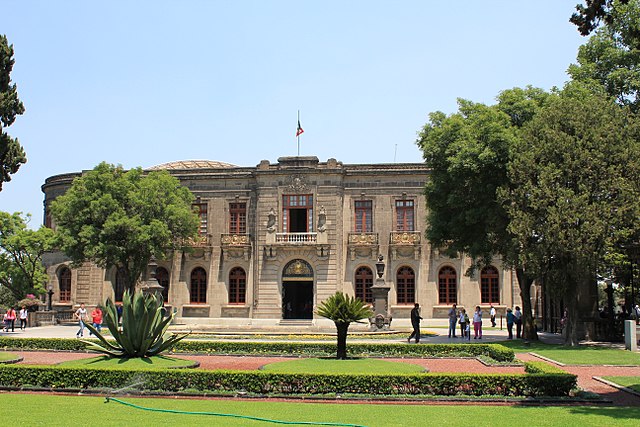
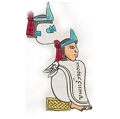
One of the premier museums in the city, Chapultepec Castle is the site of as much history as the museum inside contains. Having been the residence of an emperor and a series of presidents, it was built as the home to the man for whom Galveston, Texas, was named. As one of the highest points within the Valley of Mexico, it’s also a place with plenty of sweet views of the city and plenty to see and learn about.
The historic castle hosts the National History Museum. On top of the Cerro del Chapulín, it’s been the most visible hill in the valley, and has been vitally important for inhabitants of the region since at least the 13th century.
The story of the museum begins in 1825. The first President of independent Mexico, Guadalupe Victoria, ordered the creation of a National Mexican Museum Mexican. A hall within the National and Pontifical University was dedicated to this fulfilling this decree. It began as largely a natural history collection, with artifacts that included rocks and shells, wood samples and seeds from many parts of the country. The history collection included some archaeological pieces from the Templo Mayor in the city center and from Veracruz.
The Lorenzo Boturini collection of 1737-1743 included a number of codices and manuscripts in indigenous languages, maps, and colonial chronicles. Six years later, the museum was officially divided into three branches: Antiquities, Natural History & Botanical Gardens, and an extensive Industrial Products area.
Political and social instability in the mid-19th century meant that this three-part National Museum had neither the people nor the resources to function. Exhibitions and even custodial duties were irregular until Emperor Maximilian of Habsburg founded a Public Museum of Natural History, Archaeology, and History in 1866. This museum opened within the Casa de Moneda, which is today the Cultures of the World Museum, next to Palacio National. This museum was divided into three departments: Natural History, Archaeology and History, and a National Library.
With the end of the Second Empire in 1867, the museum’s name was changed to the National Museum and the collections increased as did the system of classifying and cataloging.
During the Porfirio Díaz period the museum continued to expand. By 1908, the natural history collections were moved to El Chopo. Without that part of the museum, the National Museum returned to being the National Museum of Archaeology, History and Ethnography.
By 1916, the need for a museum focused on the nation’s history became obvious, as the collections of an Artillery Museum joined a collection of historical banners. The addition of 30,000 objects including silverware, porcelain, weapons, miniatures, and furniture were incorporated into the collection. It wasn’t until 1939 that President Lázaro Cárdenas founded the National Institute of Anthropology and History (INAH). The Chapultepec Castle was the obvious place to house at least the finest of these now substantial collections.
The Castle was restored, remodeled, and adapted to its new use between 1941 and 1944. It opened to the public in 1944 with some 30 exhibition rooms.
Permanent collections include paintings, documents, technology, clothing, and furniture from multiple periods of Mexican history. Beginning with the fall of Tenochtitlán in 1521, though the Mexican Revolution and the beginnings of the 20th century. The National Museum of History also hosts concerts, conferences, and performing arts events.
Construction of the building began in 1785, still well within the viceregal period. Originally created as a summer home for the viceroy, that is, the Spanish Crown ruler of New Spain, the Viceroy at that time, Bernardo de Gálvez ordered it’s construction. Gálvez had been instrumental in helping Washington to secure the Florida territory during the American revolution. As Gálvez died soon after, the project was never fully completed, and the building was sold to the Mexico City municipal government in 1806.
It then stood empty until well after the War for Independence. In 1833, it was assigned to the Colegio Militar, as the military academy charged with training young officers for the Mexican Army. The Castle is most famous as the site of the Battle of Chapultepec still commemorated in the U.S. Marines theme song which begins “From the Halls of Montezuma.”
The September 13, 1847, saw the Niños Héroes, the “Boy Heroes” who died defending the castle, and the nation during the Mexican–American War. They are honored here, and at the Niños Héroes monument in the park, with a Metro Station and at numerous other places in the city and country.
The Castle, although adapted to serve as the museum we know today is mostly in the form it was given under the rule of Maximiliano and Carlota in the latter part of the 1860s. Serving as their imperial residence, the terrace is among the most important scenic overlooks in the city. Views of the Chapultepec Forest give way to Polanco and many parts even much further beyond.
 difusion.mnh@inah.gob.mx
difusion.mnh@inah.gob.mx
 +52 (55) 4040 5214
+52 (55) 4040 5214
 https://mnh.inah.gob.mx/
https://mnh.inah.gob.mx/
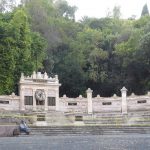
Nearest at 0.14 kms.

Nearest at 0.16 kms.
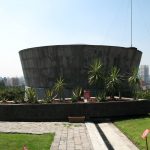
Nearest at 0.22 kms.


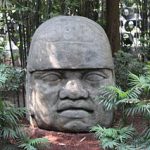
The most visited museum in all Mexico, the Anthropology Museum is like New York's Metropolitan, but even better.

The Zoo in Chapultepec is still one of the favorite parts of the park. With kids, it gets even better.

The famous lake in Chapultepec is in fact but one of several bodies of water, in a park as big as some cities.

One Chapultepec's best-loved museums, the Caracol is still the city's most dynamic presentation of history.